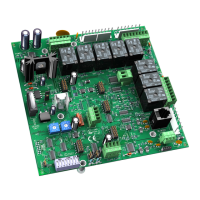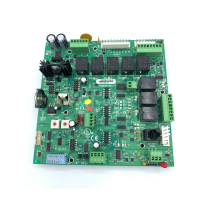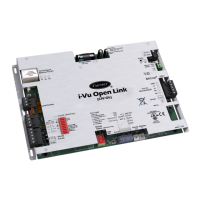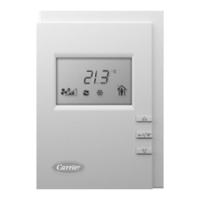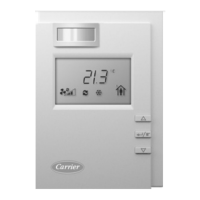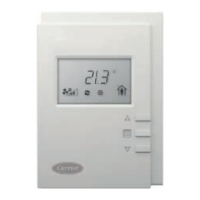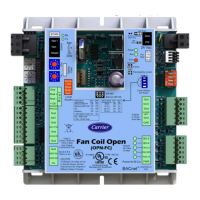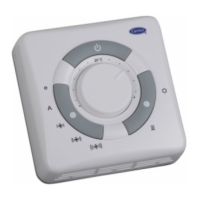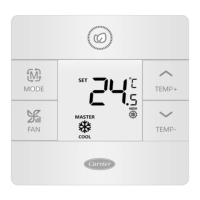Sequence of Operation
RTU Open v3 Carrier Proprietary and Confidential CARRIER CORPORATION ©2016
Integration Guide All rights reserved
30
The VVT Master gathers the following information from the slave zone controllers:
• occupancy status
• setpoints
• zone temperature
• relative humidity
• CO
2
level
• damper position
• optimal start data
The VVT Master performs mathematical calculations and algorithms on the data and then sends the composite
information to the air source. The VVT Master receives information from the air source such as System Mode,
Supply Air Temperature, and Outside Air Temperature (if available), and passes that information to all linked
controllers.
The following paragraphs describe the interaction between the air source (RTU Open) and its subordinate
zones. Additional information regarding Open Zoned Systems may be found in the VVT Zone and VVT Bypass
Controller Installation Guides.
The VVT Master determines system operation by prioritizing heating and cooling requirements from all the zones
based on their occupancy and demand. The VVT Master scans the system continuously to determine if any zones
are occupied. Occupied zones are a higher priority than unoccupied zones. The VVT Master evaluates all the
occupied zones' heating or cooling demands and sends a request to the air source (RTU Open) for:
• Cooling, if the number of occupied zones with cooling demands exceeds the number of occupied zones with
heating demands, and the demand is greater than or equal to the number of configured
.
• Heating, if the number of occupied zones with a heating demand exceeds or is equal to the number of
.
If no zones are occupied or no occupied zones require heating or cooling, the VVT Master performs the evaluation
described above for the unoccupied zones.
The VVT Master then gathers the following information and sends it to the air source (RTU Open):
• The setpoints and zone temperature from the zone with the greatest demand for the requested air source
mode (heating or cooling). (This zone is called the reference zone.)
• The system occupancy status
• Most open damper position from any zone
• RH and CO2 values (if applicable)
The air source responds by sending the air source mode, supply air temperature, and outside air temperature. The
air source verifies the mode by comparing its supply air temperature to the space temperature received through
Linkage. See the air source documentation for operation and parameters used to verify its mode. This verification
allows the VVT system to determine if the desired air source mode is actually being provided. For example, if the
VVT Master sends a request for heating and the air source does not have heat or it’s heat has failed, the air
source's actual mode indicates that and it's current mode is sent to the zones so that they can control accordingly.
The system remains in that mode until all zones of that demand are satisfied or until the system mode reselect
timer (default 30 minutes) causes a forced re-evaluation of the system. If there is no demand for the opposite
mode, the reselect timer starts again and the current mode continues until all zones are satisfied or until the
reselect timer expires, repeating the process. If there is a demand for the opposite mode, the VVT Master sends
the reference zone's space temperature and setpoints to the air source and restarts the reselect timer. The air
source re-evaluates its demand based on the new information and goes to the Vent mode until the new mode can
be verified as described above. The amount of time this takes is determined by the air source’s operating
parameters.
The VVT Master continuously evaluates the system and updates the air source with the most current system
demand. Based on the evaluation, the reference zone can change from one zone to another. The evaluation
process continues until there is no demand from any zone or the system mode reselect timer causes a re-
evaluation of the system conditions.
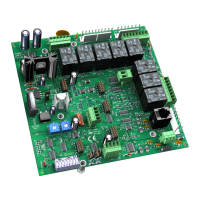
